
Villa is a genus of flies belonging to the bee-fly family (Bombyliidae). They range in size from 5 to 17 millimetres, and have typically rounded heads. The males of some species have a brilliant mat of silvery patagial scales. About 270 Villa species are found on all continents except Antarctica. They can be distinguished from similar genera (Hemipenthes) by their wing venation.
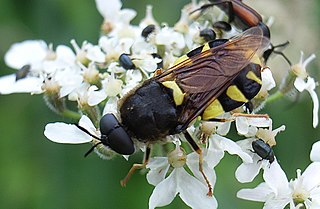
Stratiomys chamaeleon, the clubbed general, is a European species of soldier fly.
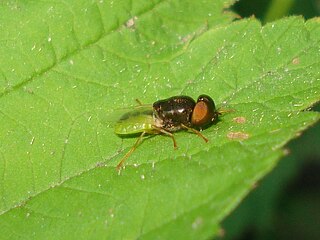
Odontomyia angulata, also called the orange-horned green colonel, is a European species of soldier fly.

Stratiomys is a genus of flies in the family Stratiomyidae.

Odontomyia ornata, also called the ornate brigadier, is a European species of soldier fly.
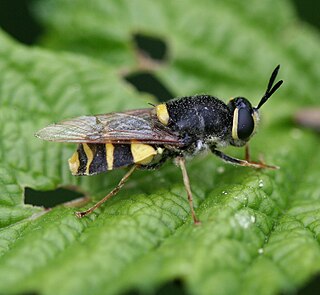
Stratiomys potamida, the banded general, is a European species of soldier fly.
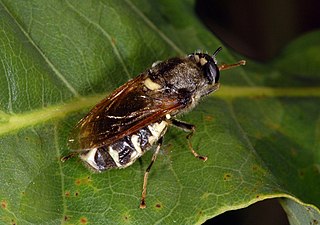
Stratiomys singularia, the flecked general, is a Palearcticspecies of soldier fly.

Sargus iridatus, the iridescent centurion, is a European species of soldier fly.

Sargus bipunctatus, the twin-spot centurion, is a European species of soldier fly.
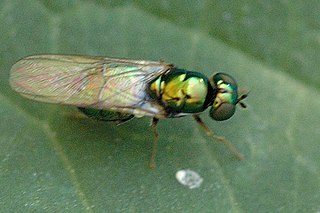
Microchrysa polita, the black-horned gem, is a species of soldier fly found in Europe, Asia, and North America.
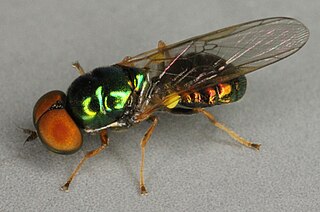
Microchrysa flavicornis, the green gem, is a European species of soldier fly.
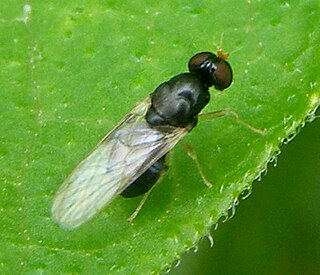
Pachygaster leachii, the yellow-legged black, is a European species of soldier fly.
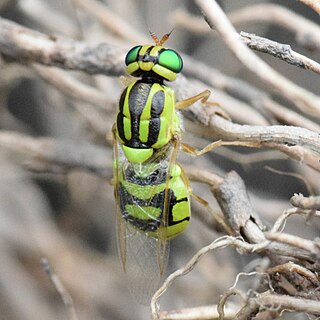
Oxycera trilineata, the three-lined soldier, is a Palearctic species of soldier fly. Boldly marked in yellowish-green and black, it is found in a variety of wetlands, including pools, ditches, fens and swampy river margins. It is found in North European Russia up to Leningrad; Central Asia, Siberia. Western Europe, north up to southern Sweden.

Oxycera pardalina, the hill soldier, is a European species of soldier fly.
Oxycera nigricornis, the delicate soldier, is a European species of soldier fly.

Beris fuscipes, the short-horned black legionnaire, is a European species of soldier fly.
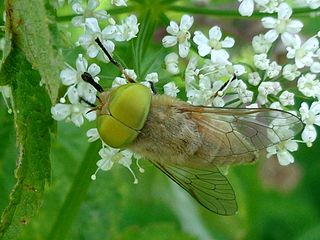
Atylotus fulvus is a species of 'horse flies' belonging to the family Tabanidae.

Xylophagus is a genus of flies in the family Xylophagidae.

Villa cingulata is a Palearctic species of bee fly in the family Bombyliidae.




















